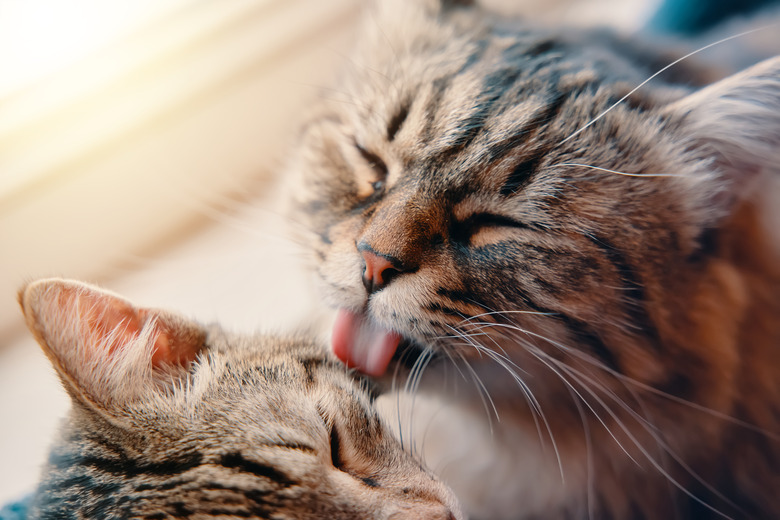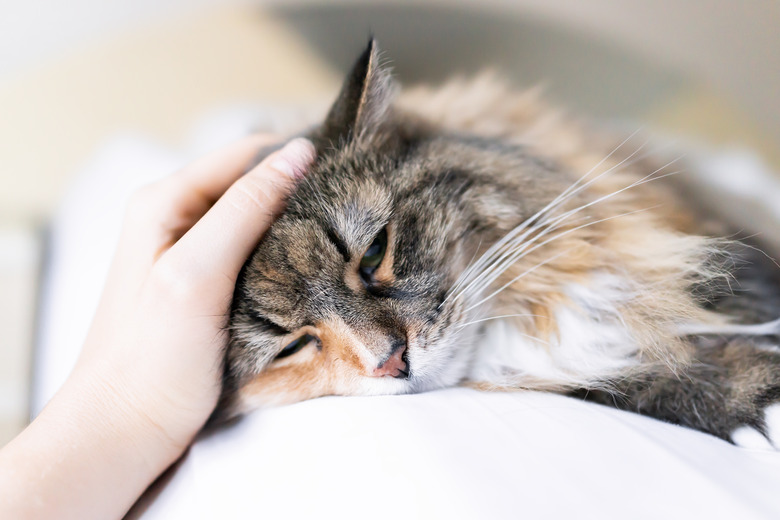Symptoms Of A Cat Internal Injury
Cat trauma symptoms, such as those from internal injuries, can be difficult to spot since cats are good at masking pain and may hide from you after an injury. However, knowing the potential causes of internal injury and bleeding and the associated symptoms can help you recognize the problem early so you can get your cat to the vet right away for treatment.
Internal injury causes
Internal injury causes
In most cases, some sort of trauma is responsible for internal injuries in cats. This could include a fall, being hit by a car, getting stepped on, getting smashed in a door, or getting into a fight with another animal. In addition, there are some illnesses and other conditions that may cause internal bleeding. These include eating rat poison, diseases that prevent blood from clotting, and tumors that have ruptured.
If you are aware of a traumatic event, monitor your cat closely for several days, as signs of injury may not be readily apparent. If your cat is showing symptoms of injury or has ingested something poisonous, get her to the vet right away for treatment.
Cat trauma symptoms
Cat trauma symptoms
Any abnormal behavior is a sign that something may be wrong with your cat. Watch for signs, such as howling, constantly crying, or hiding from you, as these may all indicate your cat is in pain. Vomiting is also a cause for concern. While a cat may vomit or cough up a hairball on occasion, anything more than this could indicate a serious problem. Also, watch for loss of appetite
Changes in litter box behavior are a cause for concern. If your cat doesn't produce a bowel movement within 48 hours of the trauma or doesn't urinate within 24 hours, this could indicate an internal injury, such as a ruptured bladder.
Watch for changes in your cat's gait. This could include limping, dragging a leg, or stiffness, all of which could indicate a potential injury. If your cat will allow you to touch him, be aware of any spots on his body that are painful or swollen. Lethargy and refusing to get up and walk could also indicate a serious problem.
Head and back injuries
Head and back injuries
If your cat seems unable to get up, this could be a sign of a back injury. Keep your cat as still as possible until you can get her to the vet.
Head injuries are also a concern after a trauma. Watch for symptoms, such as bleeding from the eyes, mouth, and nose; unequal pupil size; altered consciousness; a slow heartbeat; and abnormal body temperature.
Internal bleeding in cats
Internal bleeding in cats
Some cat trauma symptoms for which to watch include signs that your cat has internal bleeding. Symptoms may include hiding, loss of appetite, lethargy, weakness, and collapse.
Changes in vital signs are another indication of internal bleeding. Ideally, check your cat's vital signs regularly so that you know what is normal for him and can better assess when something is wrong. An increased respiration rate is common. A normal respiration rate is 35 breaths per minute or less. You may also notice that breathing is shallow or that he is using large abdominal contractions when breathing.
Check the color of your cat's mucous membranes on his gums. Normally, these should be pink, but if your cat has internal bleeding, they may be pale gray or white. His nose may also turn white.


